In the darkness of despair we saw a vision, We lit the light of hope and it was not extinguished. We planted the tree of valour and it blossomed. All sources are listed on my main blog-> https://paganimagevault.blogspot.com/
Don't wanna be here? Send us removal request.
Text
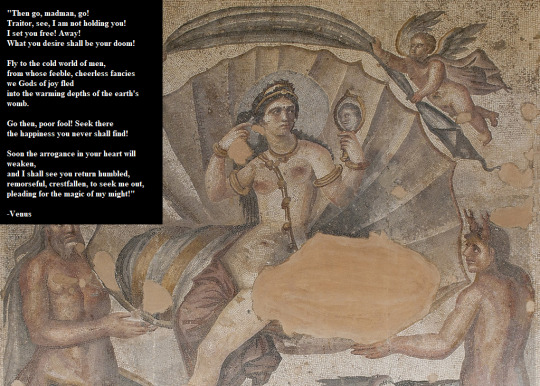
She was right, time to seek Them out again. Last last post, I promise :)
50 notes
·
View notes
Text

Hey all, I think I'm going to be taking an extensive break from the blog. Not sure how long, let's shoot for a year. I want to take some time and try to find a way to go back to that feeling I had in 2018, when this felt like a fun hobby and not work, and I know I won't find that on social media. I got hundreds (yeah...I know) of posts in queue so maybe I'll be back at some point to post them.
First stop seems to be playing some TMNT with friends, hence the gif. Good luck all and maybe I'll see you in a year!
6 notes
·
View notes
Text
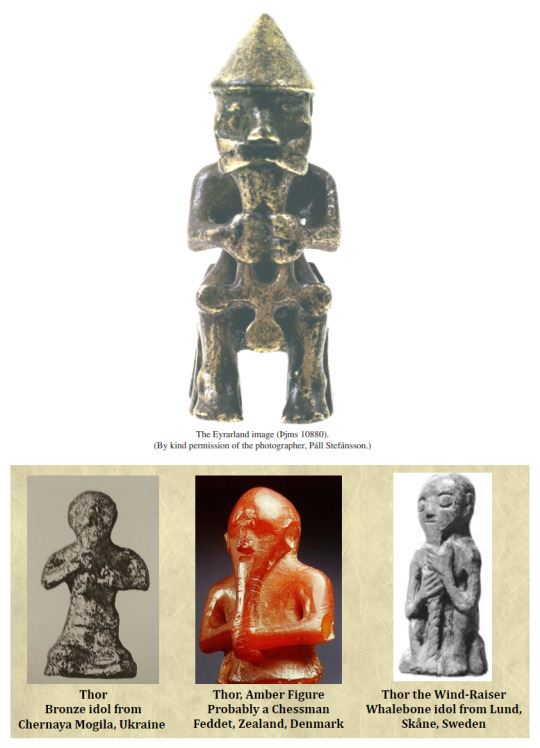
Four images of Thor 'The Wind Raiser' 8th-11th C. CE.
"Perkins provides numerous written examples of Norse sailors attempting to conjure up wind magic, often through the invocation of the God Thor, who is charged with special responsibility for the weather. Perkins relies on a detailed explication of a passage from the little known Icelandic þáttr (tale) to argue that, as with his better-known hammer-wielding influence over thunder, the God's control of the wind is instrumental. Perkins interprets the terms skeggrödd and skeggraust (each meaning 'beard-voice') as the act of Thor blowing out the wind. The central argument of this work is that the Eyrarland image is a plastic representation of Thor carrying out this process, using his beard in the manner of a wind instrument. Perkins is an accomplished philologist and his reading of the passage is convincing. However it is a limitation that the text is provided only in Old Norse, though passages in Latin and Russian are translated. Old Norse texts will continue to be marginalized in medieval studies if they are not made accessible to those outside the rather narrow discipline of Norse studies. An engaging and technical discussion of Scandinavian artefacts and texts will always find an audience there but other scholars are prevented from fully appreciating this argument if they cannot understand the critical texts. The argument that Thor was visualized as blowing out the wind, and that he was invoked to influence the wind leads to the conclusion that the Eyrarland image and other similar artefacts can be identified as amulets carried by those, presumably sailors, who most wanted to control the wind. Perkins briefly mentions a strikingly similar image to the Eyrarland image, the bronze Rällinge image. As this small figure is in rather an excited condition, he is usually identified with the fertility God Freyr, an identification with which Perkins concurs. However the Rällinge image too is stroking his beard, in the gesture which Perkins repeatedly characterizes as Thor's wind-raising ritual. Frustratingly, this parallel is not explored. The remaining sections of the book follow this conclusion into archaeological territory. Perkins focuses specifically on four small figures, including the Eyrarland image. The figurines were found as far apart as Iceland and the Ukraine, and made from media ranging from carved amber to cast bronze but Perkins identifies in them distinctive characteristics which, he argues, type them all as representative of Thor in his wind-raising capacity. These symbolic qualities range from the general observation that they tend to have the glaring eyes and muscular physique appropriate for textual accounts of the 'bruiser' God (p. 70), to the very specific feature that each of them appears to be holding his beard like a wind instrument and blowing into it."
-Thor the Wind-Raiser and the Eyrarland Image (review) by Katrina Burge, University of Melbourne 2005. The 3 bottom images are from the GermanicMythology website.
#vikings#thor#history#antiquities#artifacts#middle ages#medieval art#medieval history#scandinavian#kievan rus#paganism
255 notes
·
View notes
Text

Copper Ship Brooch from Denmark 800-1050 CE. National Museum of Denmark.
"The Primary Chronicle gives the following account the "Calling of the Varangians", dating it to the Byzantine years of the world 6368–6370 (AD 860–862):
The tributaries of the Varangians drove them back beyond the sea and, refusing them further tribute, set out to govern themselves. There was no law among them, but tribe rose against tribe. Discord thus ensued among them, and they began to war one against another. They said to themselves, "Let us seek a prince who may rule over us and judge us according to the Law." They accordingly went overseas to the Varangian Russes: these particular Varangians were known as Russes, just as some are called Swedes, and others Normans, English, and Gotlanders, for they were thus named."
...
"The earliest Byzantine record of the Rus' may have been written prior to 842. It is preserved in the Greek Life of St. George of Amastris, which speaks of a raid that had extended into Paphlagonia. Contemporary Byzantine presence of the Rus' is mentioned in the Frankish Annals of St. Bertin. These relate that a delegation from the court of the Byzantine emperor visited Frankish Emperor Louis the Pious at his court in Ingelheim in 839. In this delegation were two men who called themselves Rhos (Rhos vocari dicebant). Louis enquired about their origins and learnt that they were Swedes. Fearing that they were spies for their brothers, the Danes, he incarcerated them."
-taken from Wikipedia
#vikings#middle ages#danish art#antiquities#artifacts#medieval history#medieval art#museums#history#scandinavian#kievan rus
41 notes
·
View notes
Text
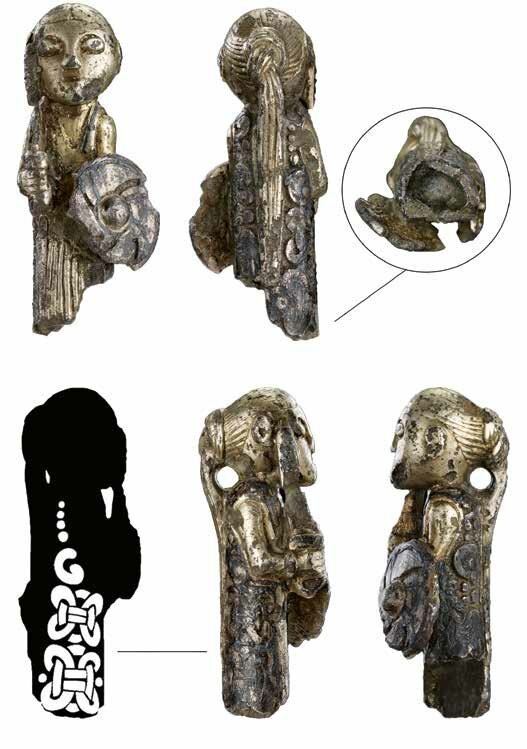

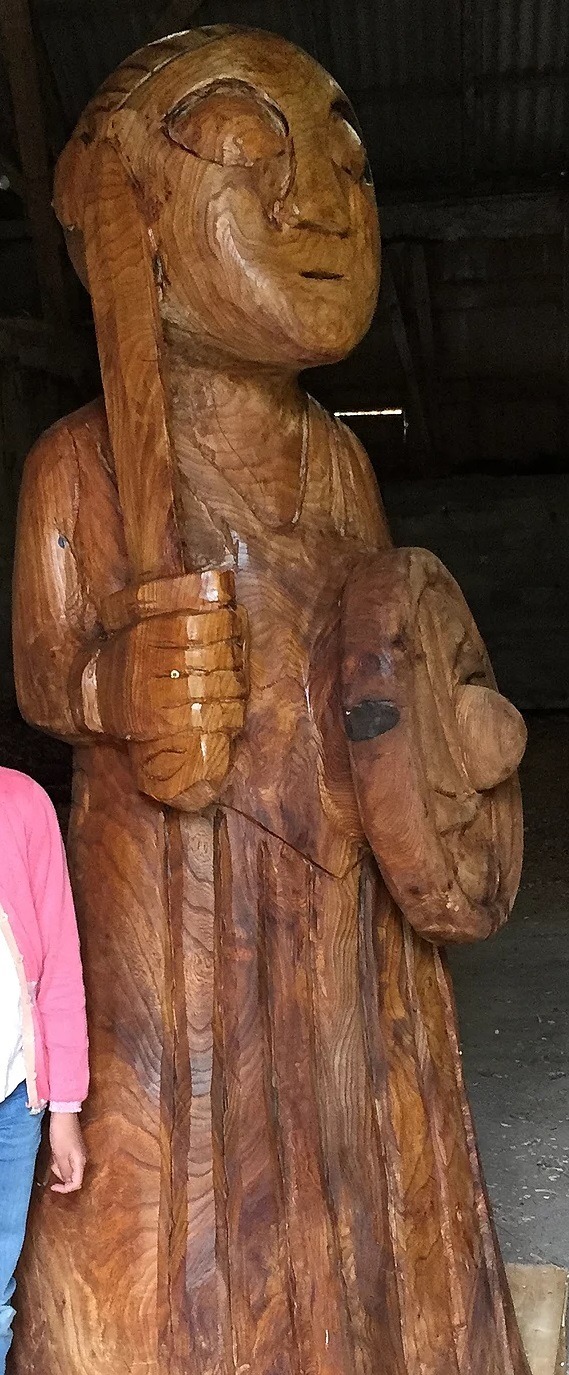

The 'Valkyrie' from Hårby 800 CE. Note the swastika on the shield.
"Contemporary foreign sources testify abundantly that the Byzantine Greeks, even prior to 852, knew the Russes to be Scandinavians. Luidprand of Cremona, who was in Constantinople in 949, writes of the Byzantine capital that it is situated among dangerous neighbors, for at its north it is menaced by Magyars, Pechenegs, Khazars and Rusii, "Whom we call Nordmanni [Normans]." The identification of Rusii with Normans is repeated in his subsequent account of Igor's foray of 942."
-The Russian Primary Chronicle, Laurentian Text, translated and edited by Samuel Hazzard Cross & Olgerd P. Sherbowitz-Wetzor
...
Al-Masudi identified the Rus with the same northern people raiding al-Andalus in the Iberian Peninsula: "Sometime before the year 300/912–913, ships carrying thousands of men reached al-Andalus by sea and raided the Atlantic coasts. The people of al-Andalus claimed that these enemies were one of the nations of the majūs [word for Vikings in al-Andalus], who came to attack them by sea every two hundred years and that they reach their country by means of a channel which communicates with the Ocean. This is not to be confused with the channel upon which is the bronze lighthouse. Personally, I think – but God best knows the truth – that this channel communicates with the Sea of Azov and the Black Sea and that the attackers were those Rūs we have already mentioned, since they are the only people who sail those seas that communicate with the Ocean."
- quote from Ibn Fadlan and the Land of Darkness
#vikings#valkyries#valkyrie#medieval art#medieval history#middle ages#antiquities#artifacts#scandinavian#swastika#museums#history#pagan#kievan rus
118 notes
·
View notes
Text

Arrival of Rurik to Ladoga by Viktor Vasnetsov (1848-1926)
"The Povest' preserves the tradition that the Slavic tribes of Northern Russia, in common with their Finnish neighhors, were for some time tributary to the "Varangians from beyond the sea." Stirred to revolt by the exactions of the latter the Slavs eventually rebelled, but were unable, according to the Povest' to arrive at any satisfactory inter-tribal understanding. To escape from the resulting confusion, the Povest' thus reports that they sent overseas "to the Varangian Russes," saying, "Our land is great and rich, but there is no order in it; come and rule and have dominion over us." This invitation was accepted by Rurik and his brethren, each of whom assumed control over a north-Russian centre, with Rurik himself at Novgorod, Sineus at Beloozero, and Truvor at lzborsk. Such, in its simplest terms, is the narrative of the "calling of the princes".
-The Russian Primary Chronicle. Laurentian Text. Translated and edited by Samuel Hazzard Cross and Olgerd P. Sherbowitz-Wetzor
...
"In the year 6362 (854) (...) And the Slovenes and Krivitsi and Merya and Chud rose against the Varangians and expelled them beyond the sea; and they began to rule themselves and set up cities. And they arose to fight with themselves, and there was great strife and discord between them, and they rose up city upon city, and there was no righteousness among them. And they resolved to themselves: "Let us look for a prince who would rule over us and reward us according to our rights." They went over the sea to the Varangians and said: "Our land is great and plenty, but we have no order; so come to us to reign and rule us".
-Novgorod First Chronicle
...
The Arab historian, al-Masudi, gives a similar description: "The Saqāliba [Slavs] are divided into several different peoples who war among themselves". From Ibn Rusta: "The Rūs raid the Saqāliba [Slavs], sailing in their ships until they come upon them. They take them captive and sell them in Khazarān and Bulkār (Bulghār). They have no cultivated fields and they live by pillaging the land of the Saqāliba [Slavs]". The Finns have accurately kept the name Rus [Ruotsi] for the nation of Sweden, from whence the original Germanic Rus came.
#kievan rus#swedish history#middle ages#medieval history#paintings#european art#history#european history#slavic#finno ugric#varangian
23 notes
·
View notes
Text
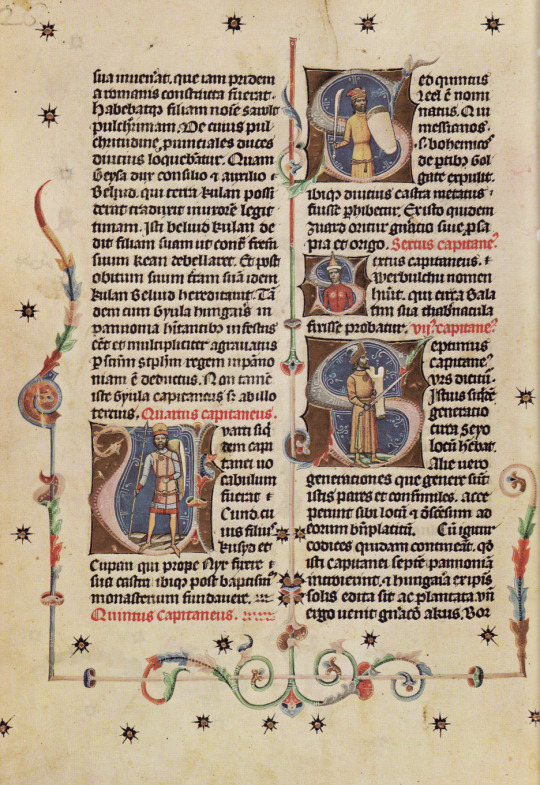
Hungarian captains from the 9th-10th C. CE: Kund (the Fourth Captain), Lehel (the Fifth Captain), Bulcsú (the Sixth Captain), Örs (the Seventh Captain) from the Chronicon Pictum (Page 26), manuscript dated to 14th C. CE.
"943 CE: Allied with the Kievan Rus, a Hungarian army attacks the Byzantine Empire. Emperor Romanos I Lekapenos buys peace, and accepts to pay a yearly tribute to the Hungarians."
-taken from Wikipedia
#illuminated manuscript#antiquities#artifacts#hungarian art#middle ages#medieval art#medieval history#magyar#finno ugric
249 notes
·
View notes
Text
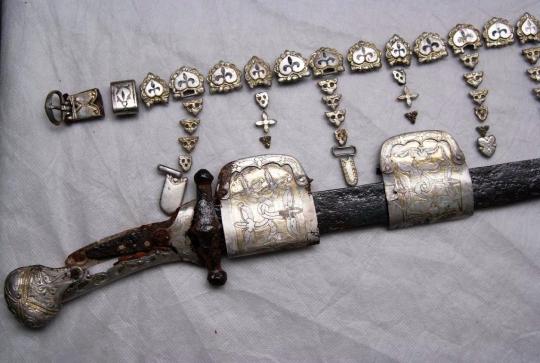
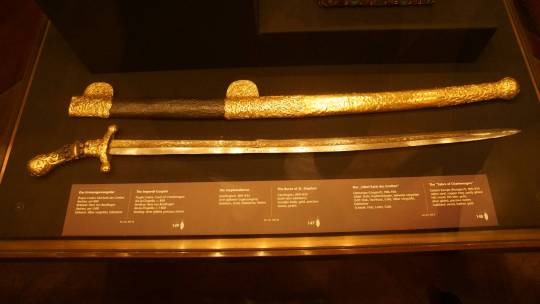
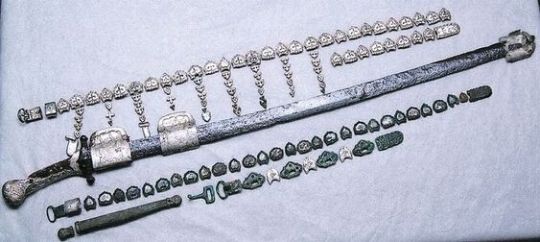

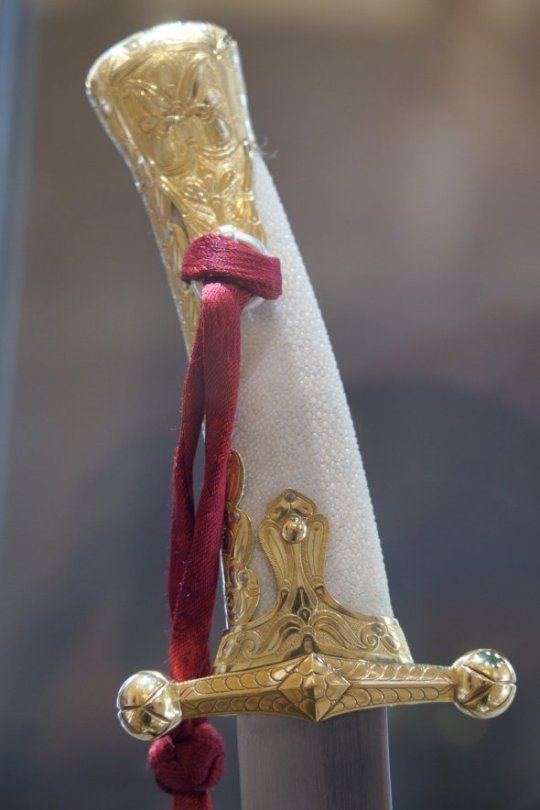

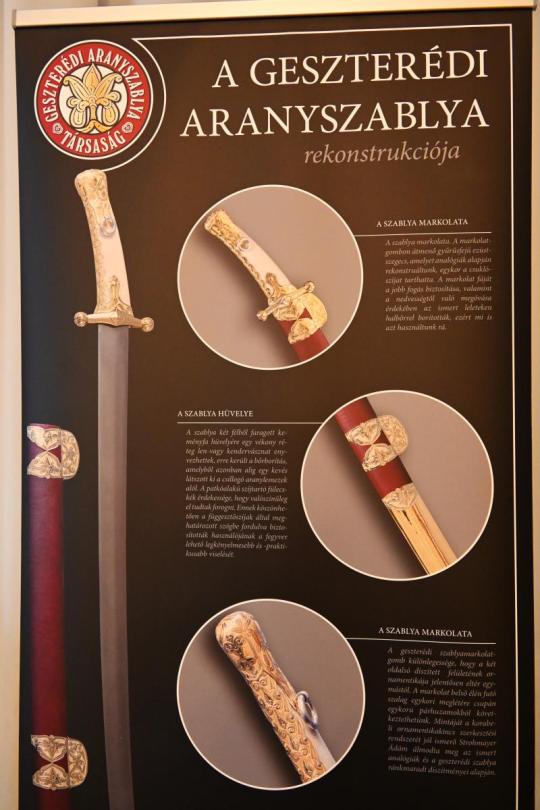
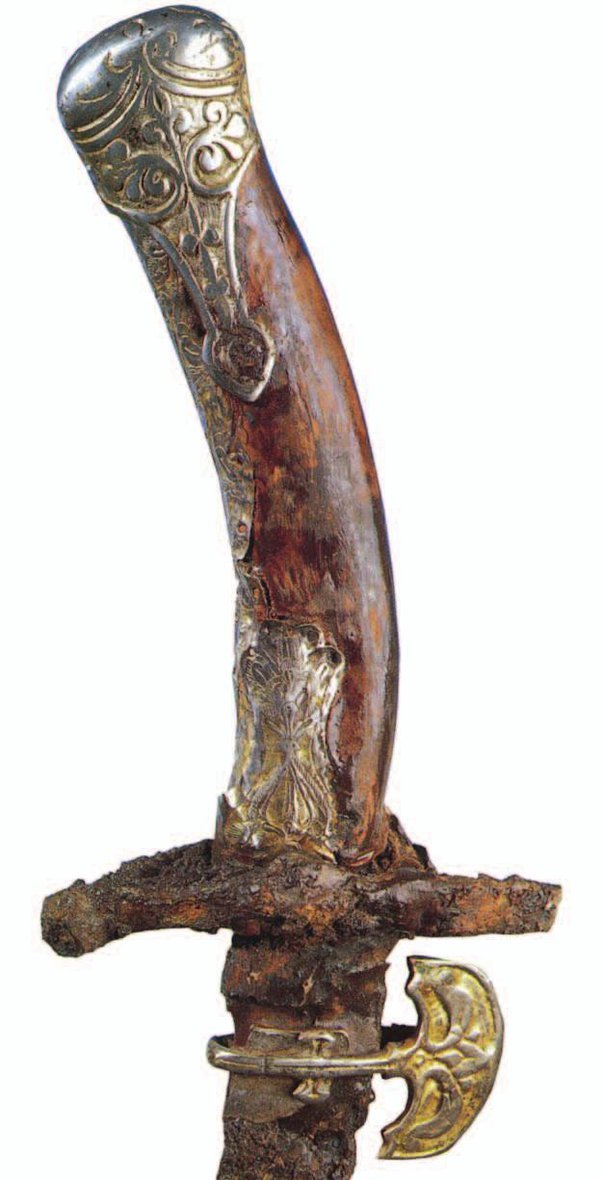


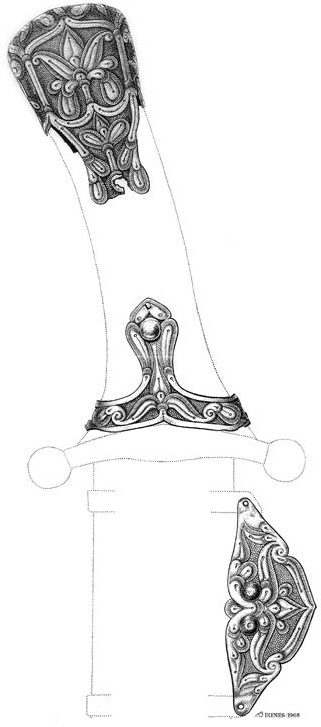
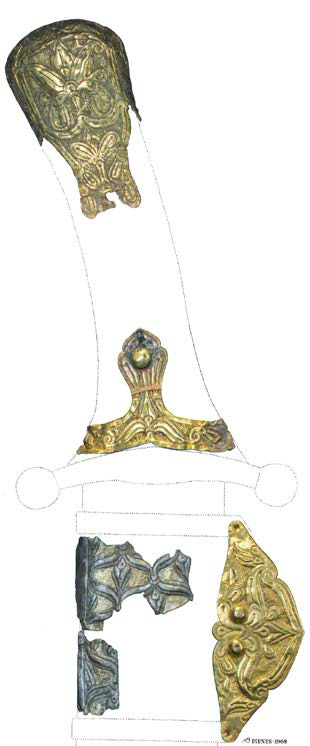
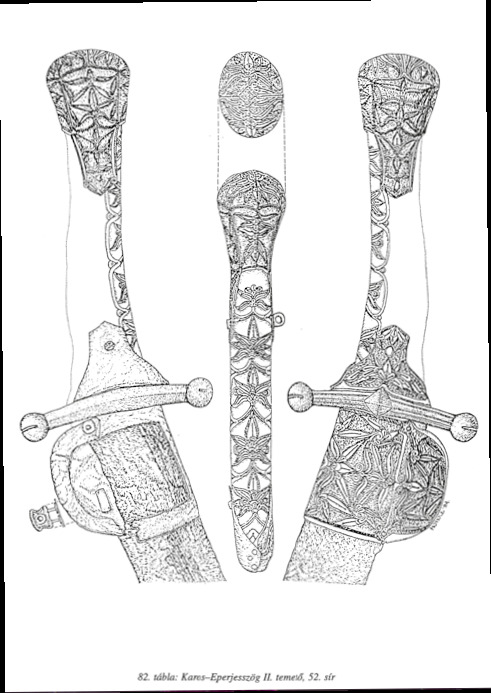
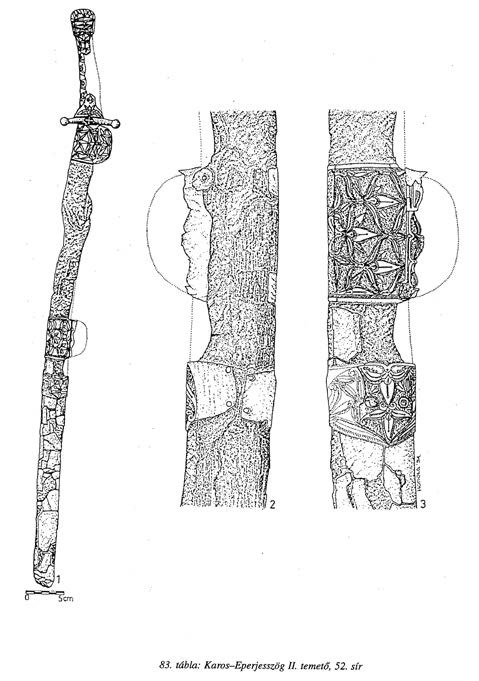
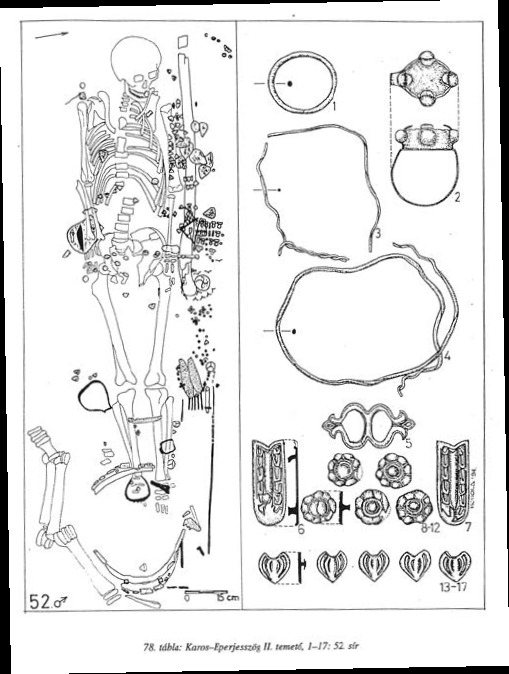
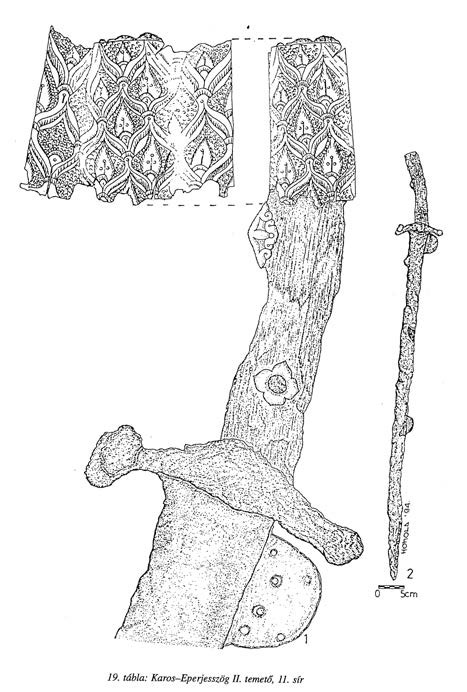
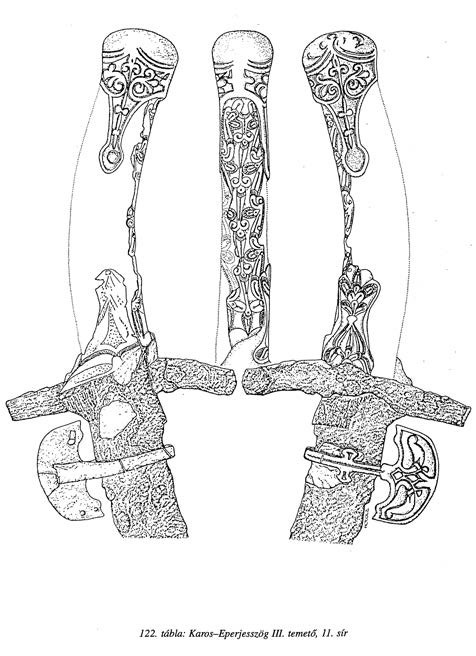
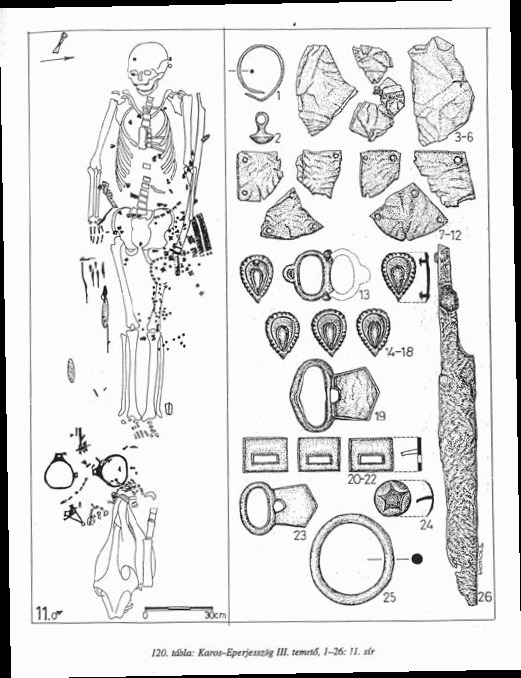
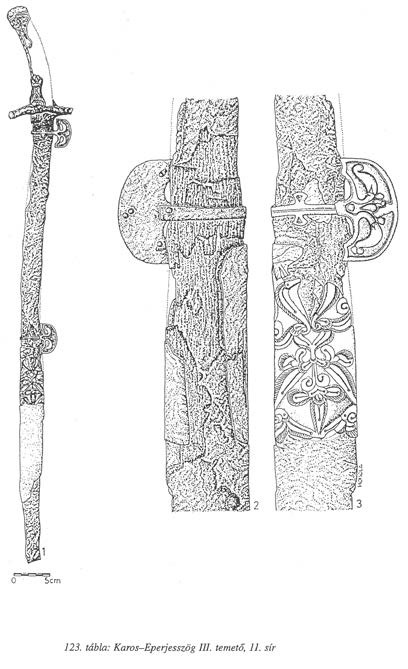
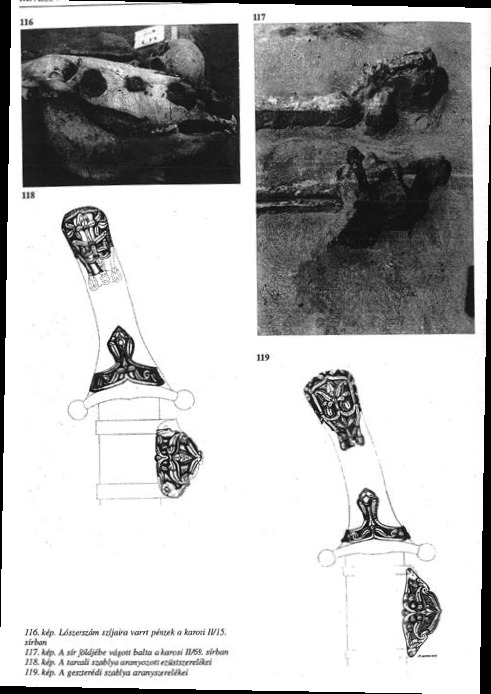
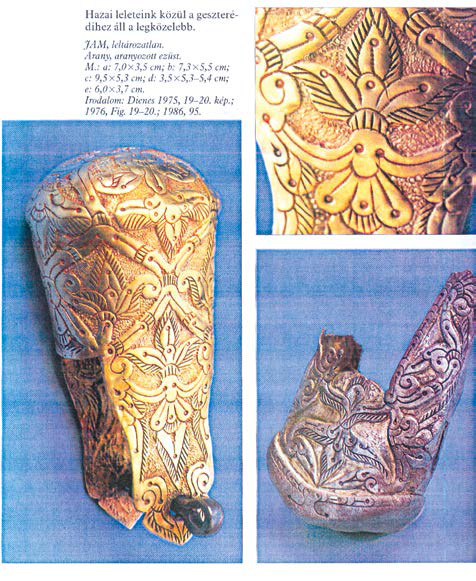
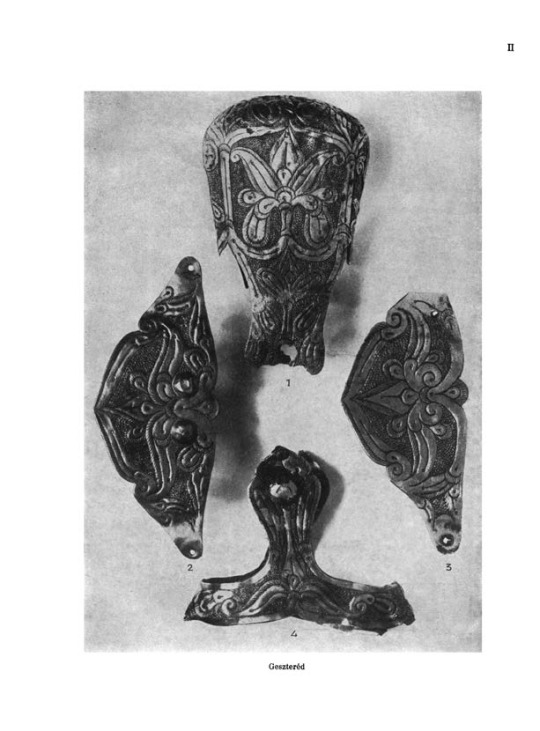
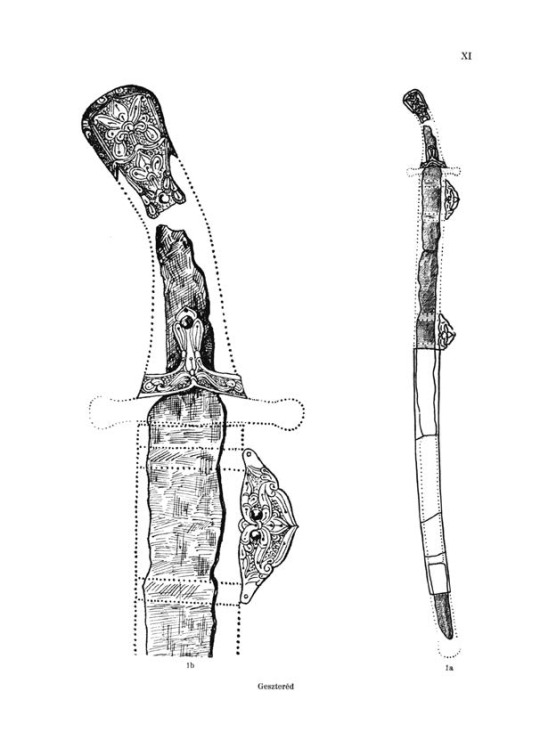
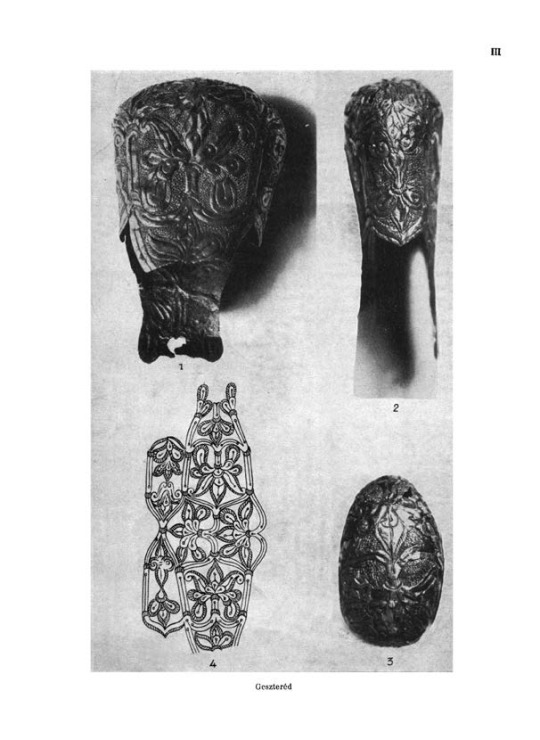
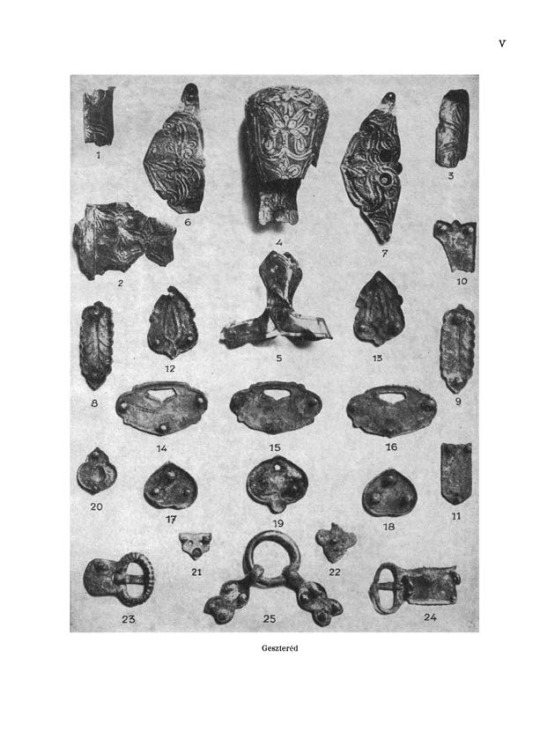
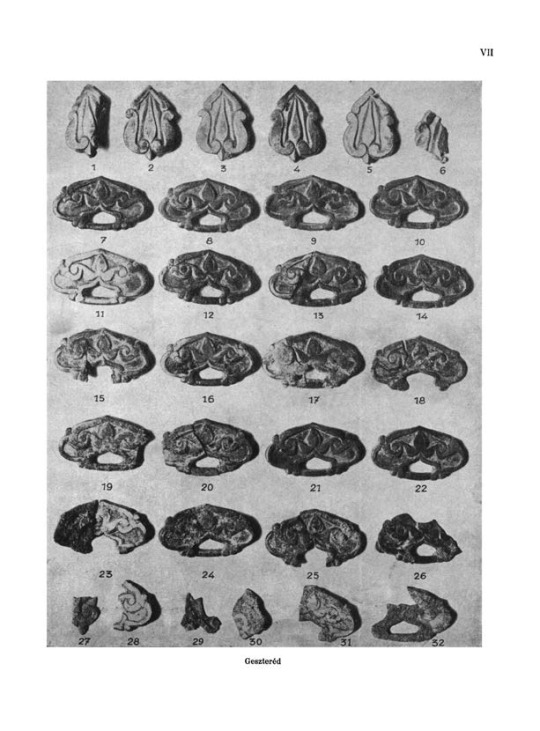
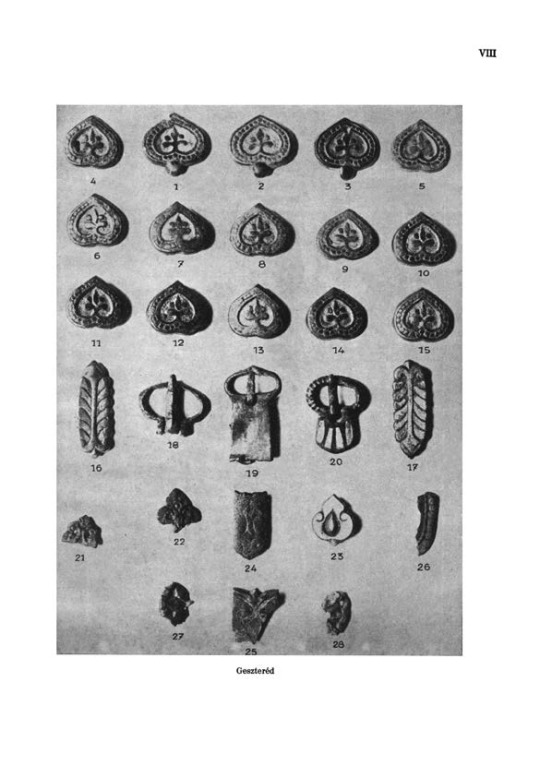
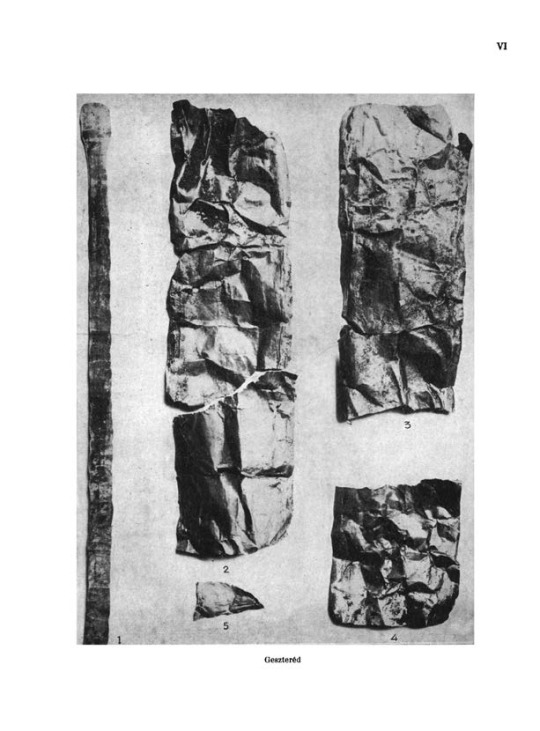
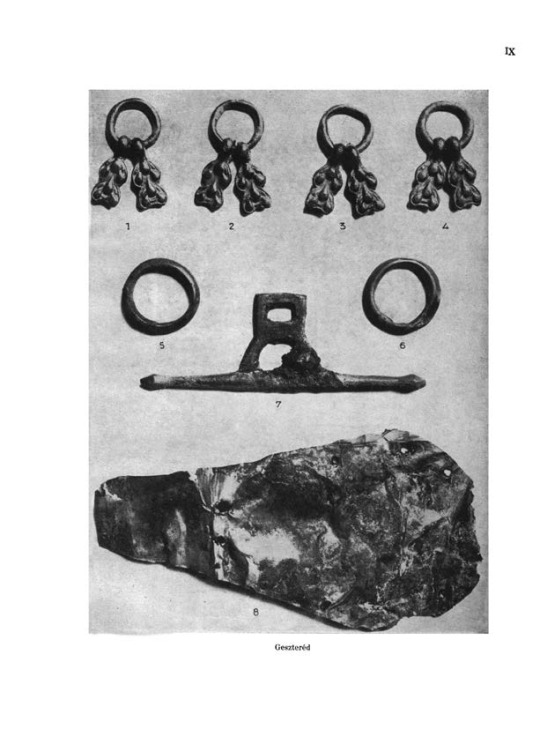
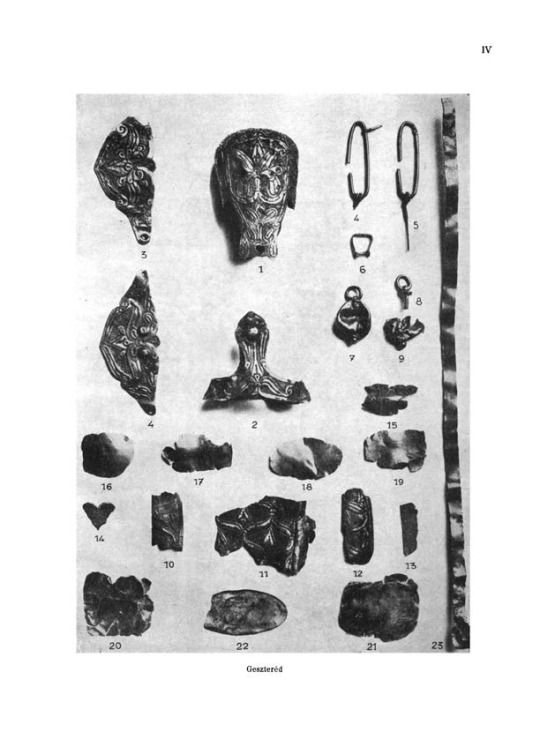
Hungarian sabers from Geszteréd, Rakamaz, Karos, and the so-called "Sword of Charlemagne/Attila", 9th-10th C. CE.
Note the "Sword of Charlemagne/Attila" is dated to the 10th C. also and is of the Hungarian type.
#hungarian#antiquities#artifacts#history#medieval weapons#medieval art#medieval history#middle ages#swords#museums#finno ugric#magyar
208 notes
·
View notes
Text

"In situ sabre and sword belt, from an early Magyar warrior's grave 9th-10th C. CE. This hilt design was widely used by the Magyar. (Hungarian National Museum; photograph courtesy of Tamas Hortsin)". From book: 'Mounted Archers of the Steppe 600 BC-AD 1300', Osprey Publishing. Note the swastika design.
"[The Hungarians] are armed with swords, body armor, bows and lances. Thus, in battles most of them bear double arms, carrying the lances high on their shoulders and holding the bows in their hands. They make use of both as need requires, but when pursued they use their bows to great advantage. Not only do they wear armor themselves, but the horses of their illustrious men are covered in front with iron or quilted material. They devote a great deal of attention and training to archery on horse-back. A huge herd of horses, ponies and mares, follows them, to provide both food and milk and, at the same time, to give the impression of a multitude."
— Leo the Wise: Tactics
#hungary#swords#archaeology#medieval weapons#swastika#antiquities#middle ages#medieval history#museums#magyar#finno ugric
35 notes
·
View notes
Text
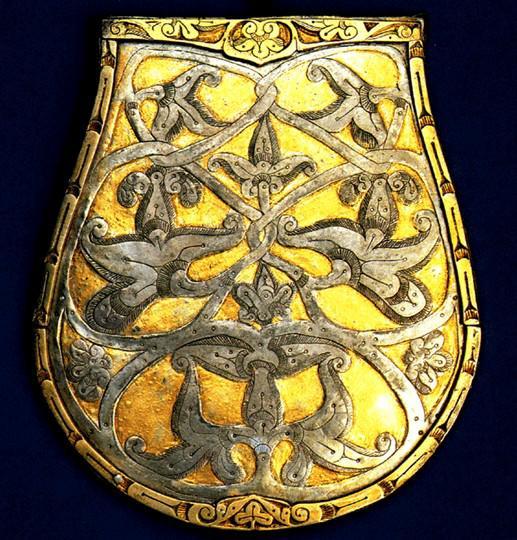
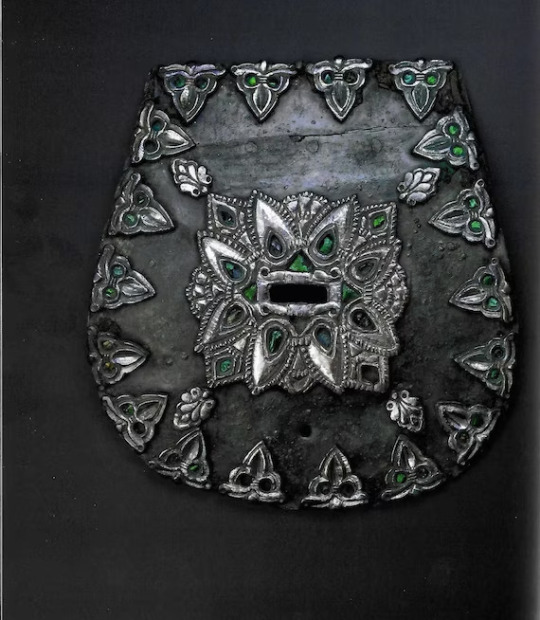
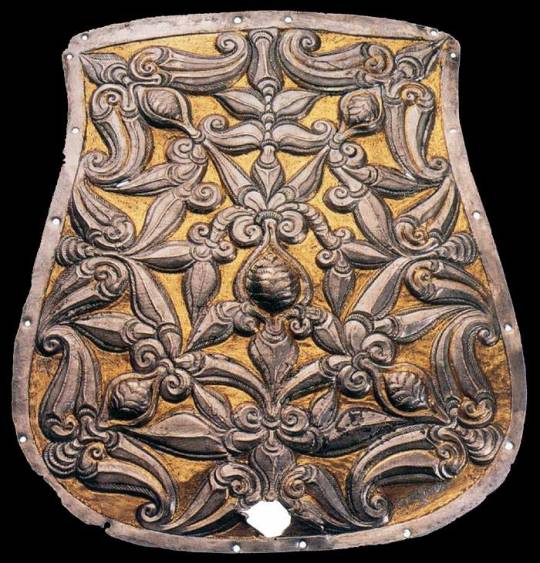
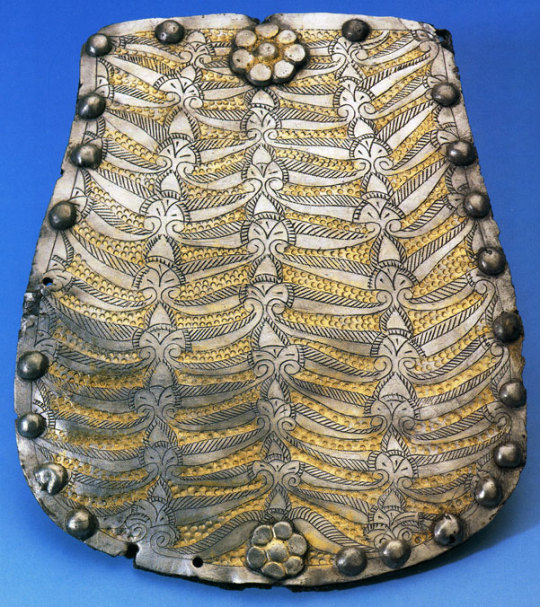

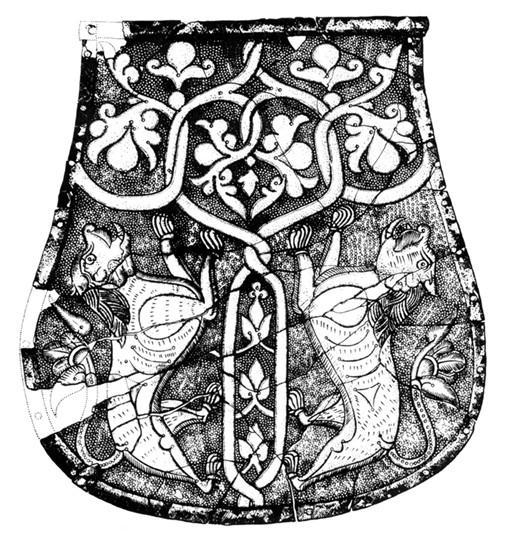
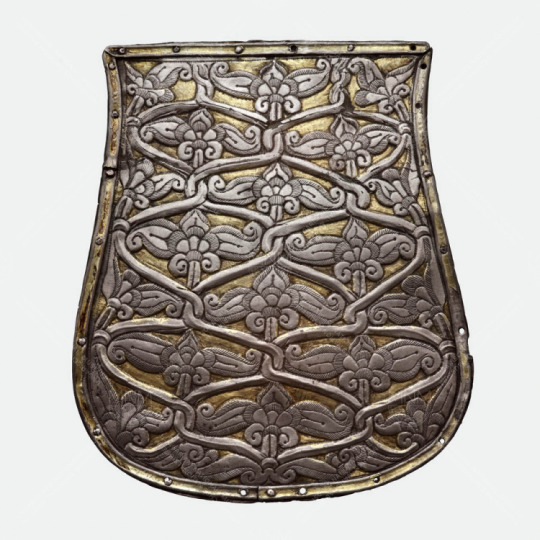
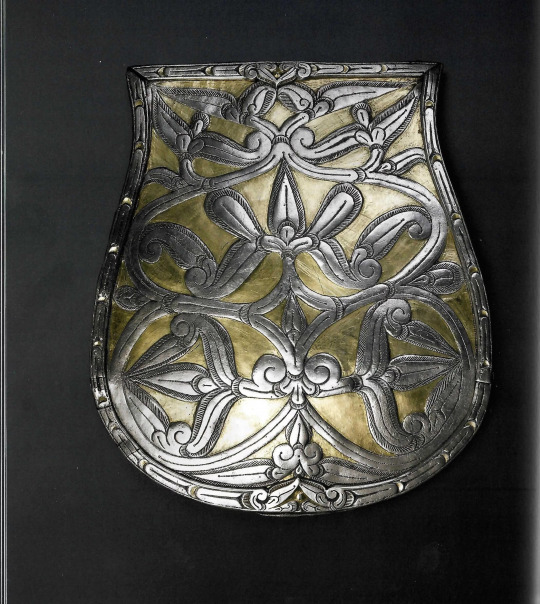
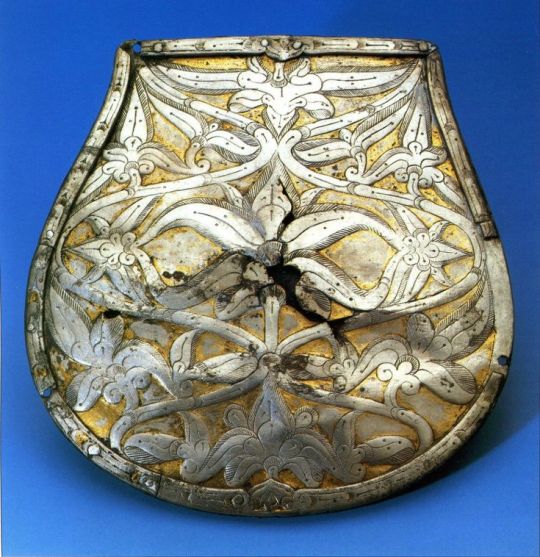
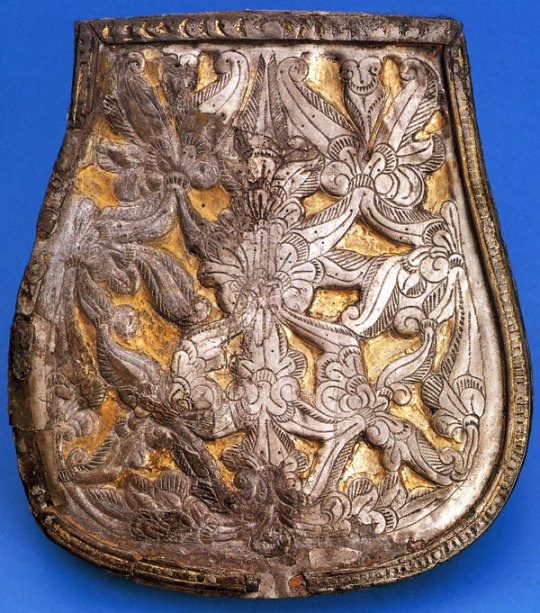

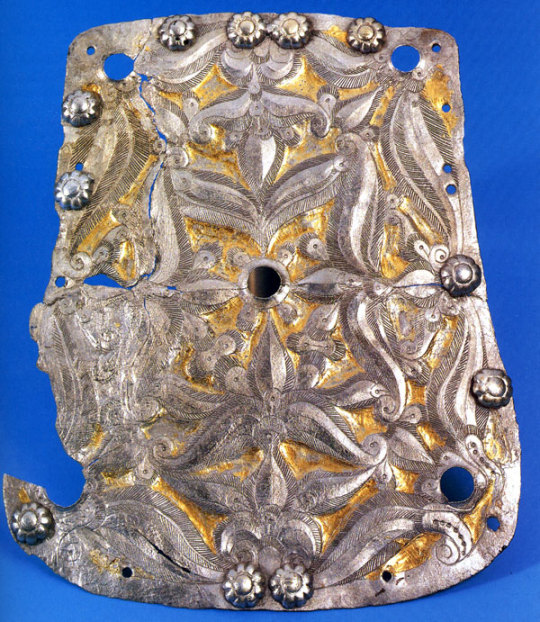
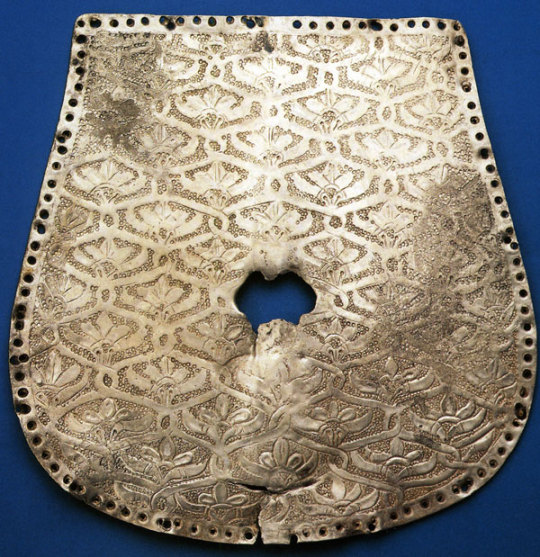
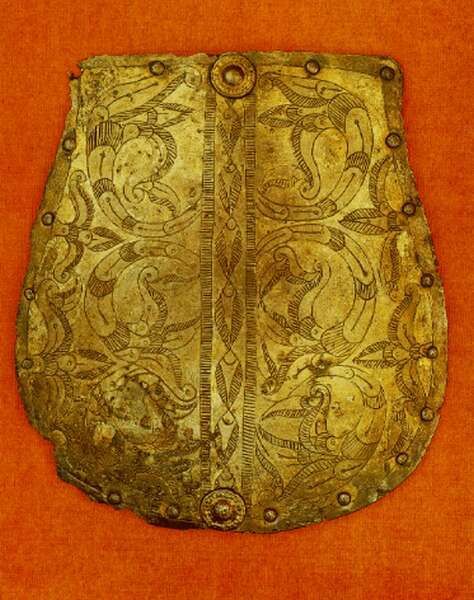
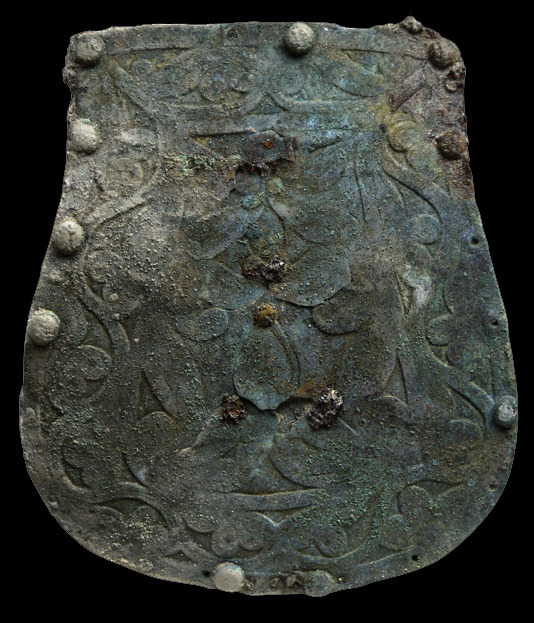
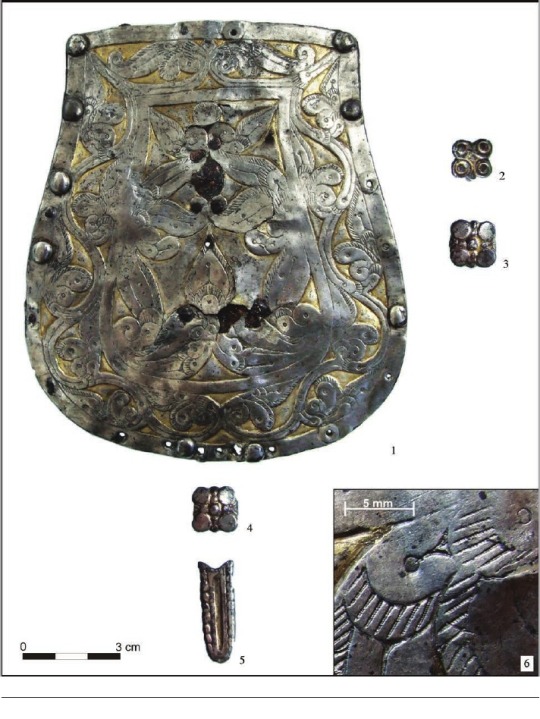
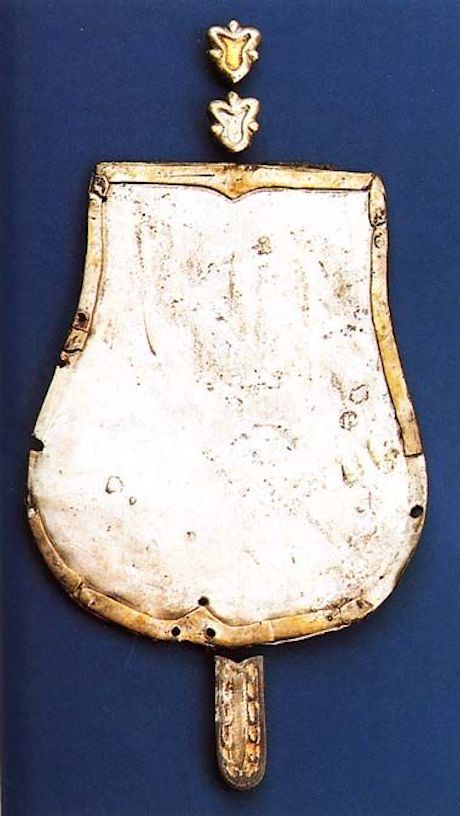
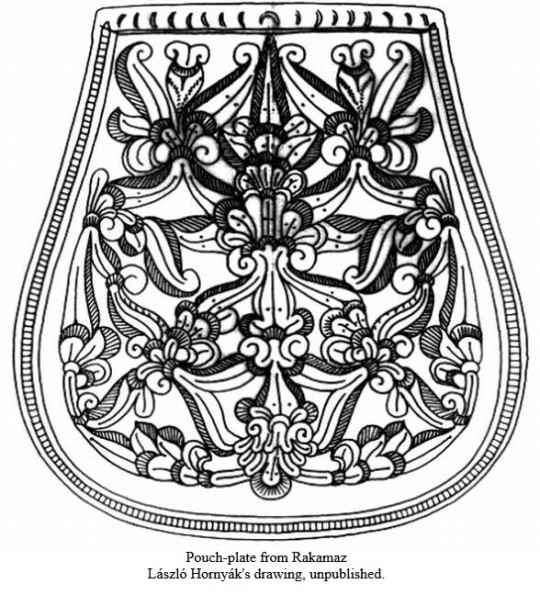
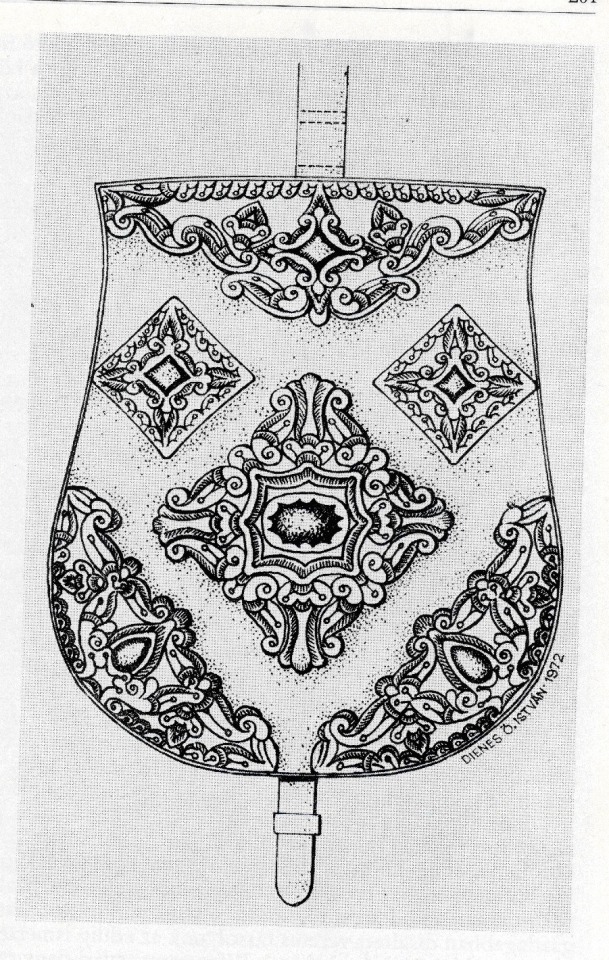

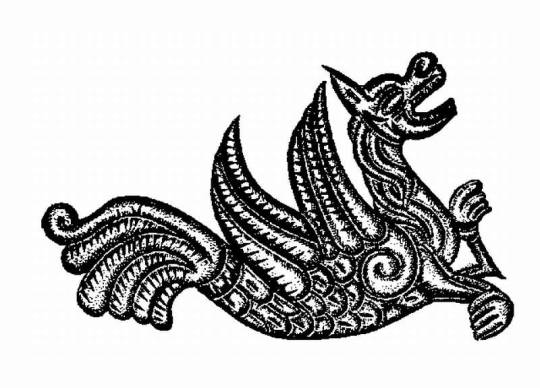

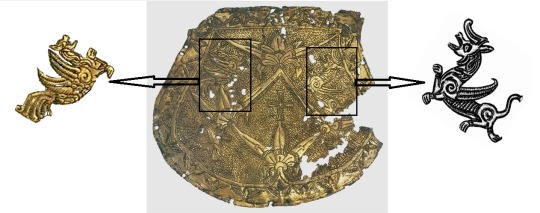
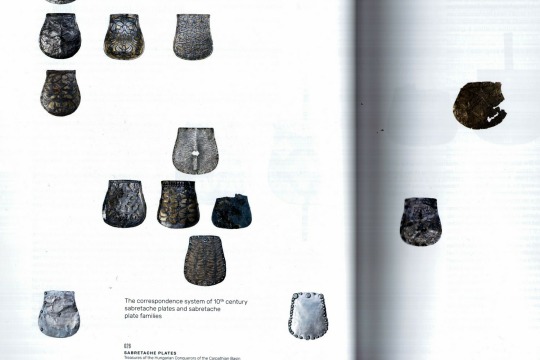
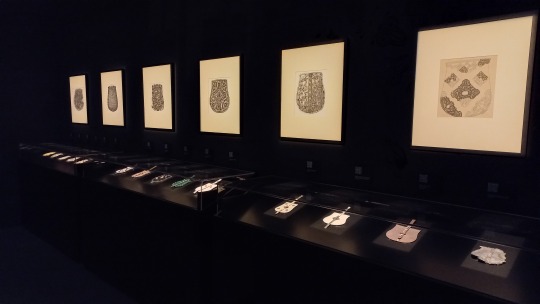
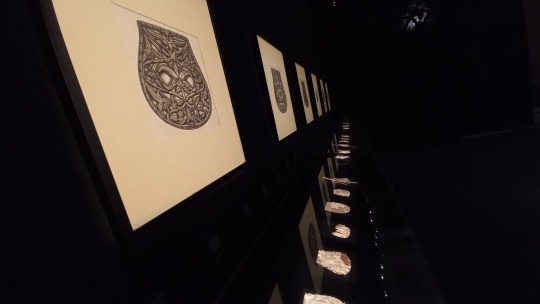
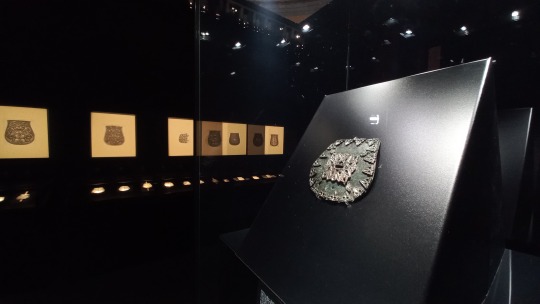

Magyar (Hungarian) sabretach plates 9th-10th C. CE. More images and sources on my blog, link below.
"Hungarian men held their essential tools (particularly the fire-starting kit of the age, that is, fire steel, flint and tinder) in their typically leather sabretaches suspended on the right side of their belts. The sabretache’s front flap was occasionally ornamented with bronze or gilded silver mounts, or contiguous plates (sabretache plates) as early as around the 900s. The ornaments on the sabretaches (plates and mounts) were typically Hungarian rank indicators of the 10th century; moreover, some regard these as power insignia of the dignitaries serving the prince’s family. They could have belonged to the military escort of Hungarian great princes, or were probably leaders or high-ranking participants of the raids. The number of such artefacts ever displayed in a museum is extremely low, we only know about 27 sabretache plates and 13 ornamental mounted or leather sabretaches including the recently found pieces. Most of them were found in the upper region of the River Tisza, some around the boundaries of Transdanubia and Upper Hungary, but not even one has ever been found in other core areas (e.g., Transylvania, southern Hungary).
Ornamented pieces represent outstanding examples of 10th century Hungarian goldsmithery. However, it was not ornamentation that expressed ranking, but the right to wear these objects and other insignia (such as gilded silver-plated belt mounts, sabers, quivers holding arrows, or harness decorations). Sabretache mount ornaments gradually lost their significance in the rapidly transforming society and their use discontinued after the Hungarian raids had stopped (after 955/970). Hungarian great princes consolidated the central power with a firm hand in the last third of the 10th century, which implied the internal relocation of the population, and the organisation of a new Western-type military escort. The onetime colourful Eastern clothing and the art behind it vanished.
A Hungarian Conquest period cemetery consisting of 77 undisturbed graves were unearthed in the vicinity of Páty settlement at the very beginning of 2022. Two graves also included insignia, namely sabretache ornaments, which suggests burials of extremely high-ranking men. Similar complete sabretache ornaments unearthed by applying contemporary archaeologoical methods were last discovered in 2011, while only as few as 38 pieces of such artefacts have been previously known from the Carpathian Basin so far. A further significance of the finds of Páty lies in the fact that sabretaches have been found together with their content (flint fire steel, and whetstone).
At the end of the campaigns against the western states and Byzantium (955 and 970) probably also weakened the power of the tribal aristocracy. Historical sources and archaeological finds suggest that the Hungarian Chieftans strengthened their central power with a firm hand in the last third of the 10th century, both by large-scale internal population resettlement and by organising a new type of military entourage around them. They tried to equip their members with Western-style weapons, and the former badges of dignity lost their role and were no longer used by the new escort. The splendour of oriental costume and art of the past has slowly faded away, left only by the magnificent jewellery that was buried in the ground in the preceding decades."
-taken from the Hungarian National Museum
#hungary#europe#antiquities#artifacts#middle ages#medieval history#medieval art#museums#archaeology#hungarian art#finno ugric#art history#magyar
177 notes
·
View notes
Text
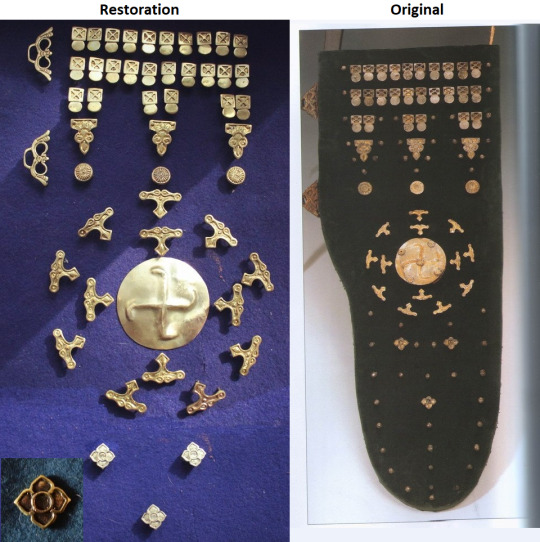
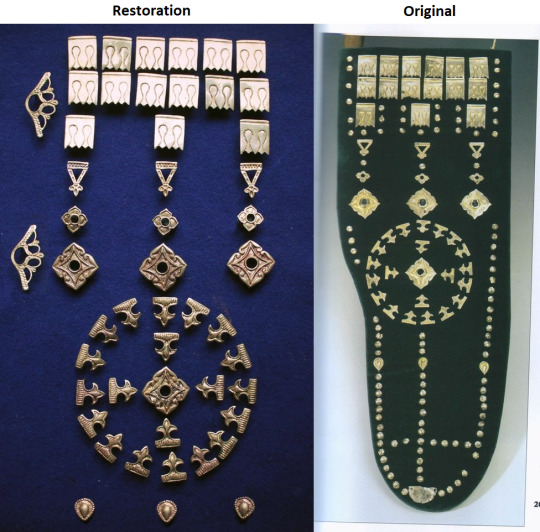


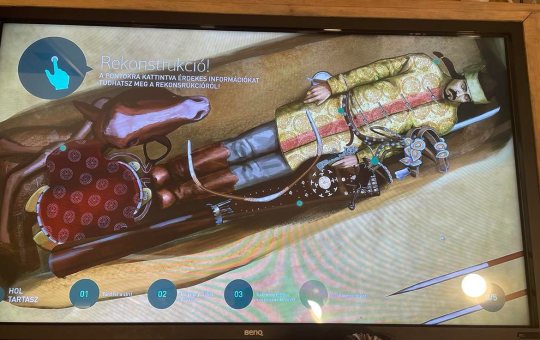
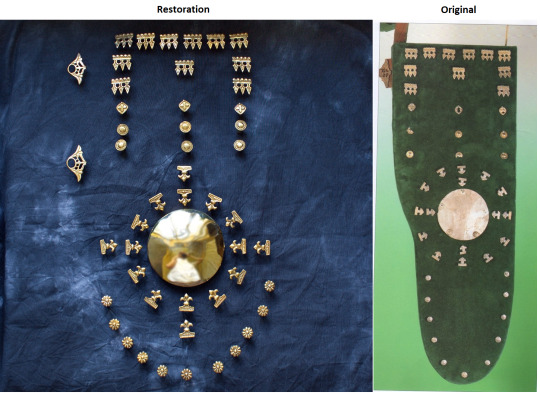
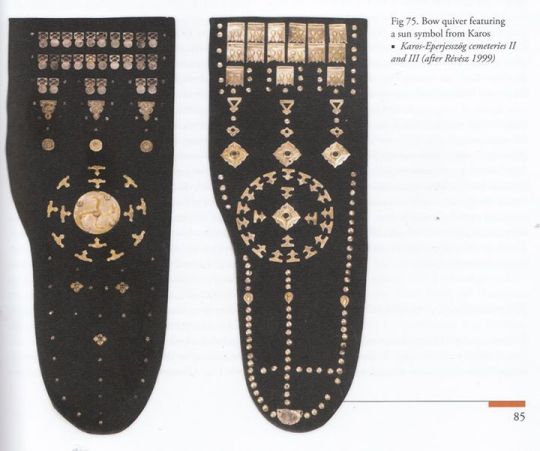
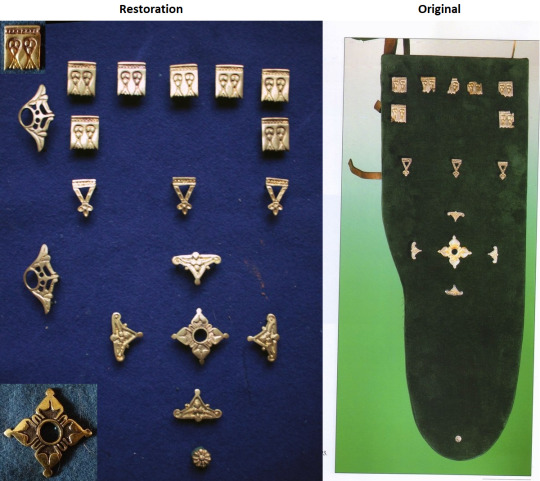
Magyar (Hungarian) decorated quivers 9th-10th C. CE
#hungary#archaeology#museums#middle ages#medieval weapons#medieval art#artifacts#antiquities#swastika#europe#finno ugric#magyar#medieval history
198 notes
·
View notes
Text
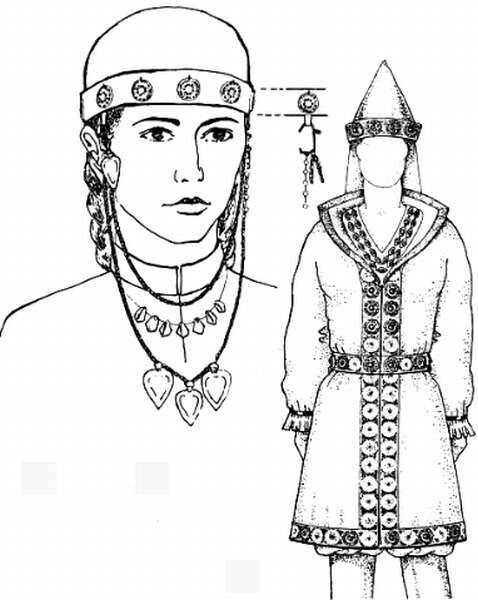


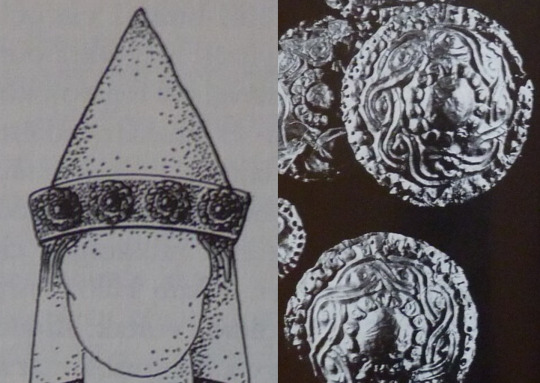

Restoration of Hungarian appearance 9th-10th C. CE
From ProudAndTorn: "These Pagan Ugric people made a strong impression. As Persian geographer Ahmad ibn Rustah wrote,
“These Magyars are a handsome people and of good appearance and their clothes are of silk brocade and their weapons are of silver and are encrusted with pearls."
- Ahmad Ibn Rustah, The Book of Precious Records (10th C. CE)
...
Abu Hamid al-Gharnati, who lived in Hungary for three years around 1130-1155 CE, in his chapter on Hungary gives the description of a girl "beautiful as the moon, with black hair and eyes, and skin as white as camphor".
Al Masudi's description from 943 CE: "These people are the handsomest, the most numerous and the most warlike of all".
#hungarian art#hungary#history#historical clothing#medieval clothing#middle ages#medieval art#museums#medieval literature#finno ugric#magyar#pagan
210 notes
·
View notes
Text
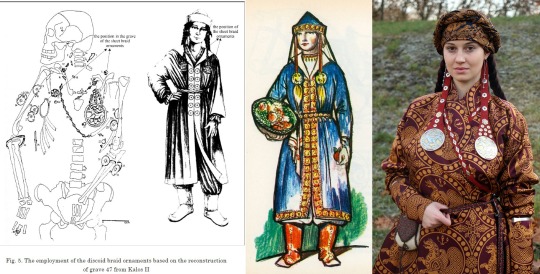
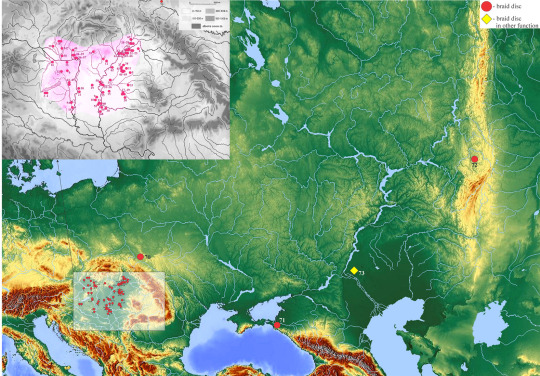
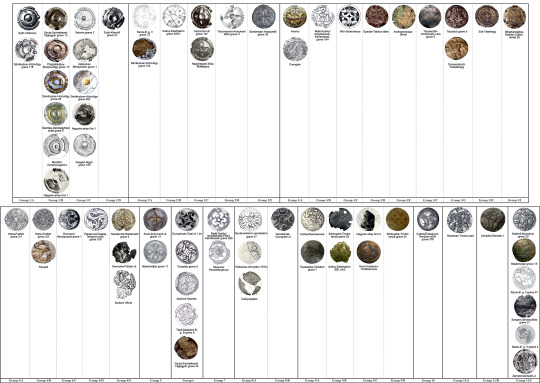
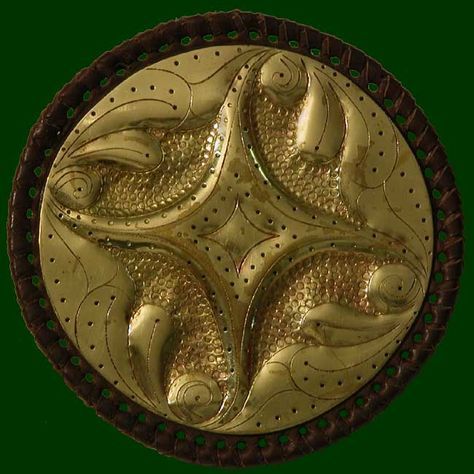
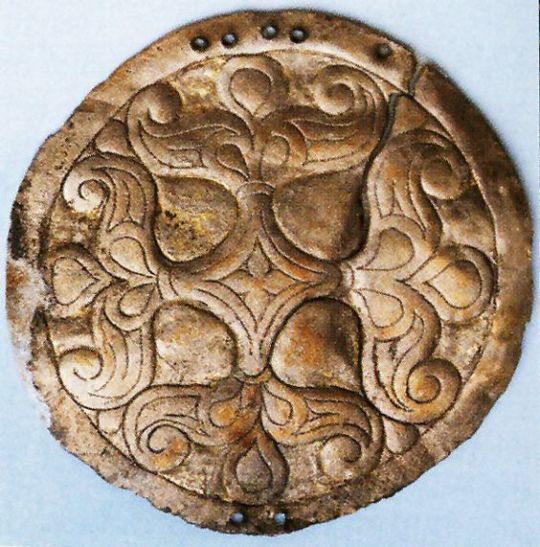





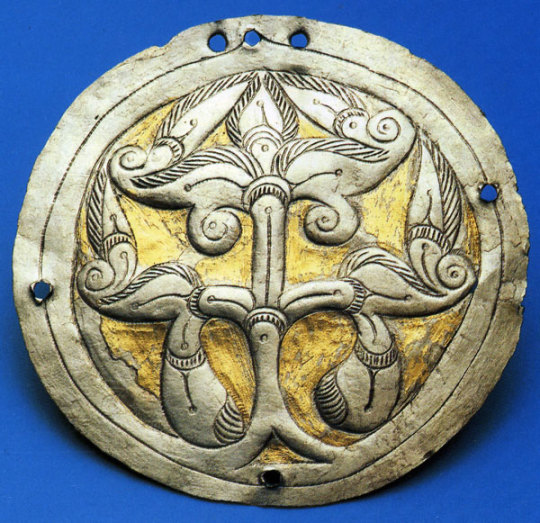

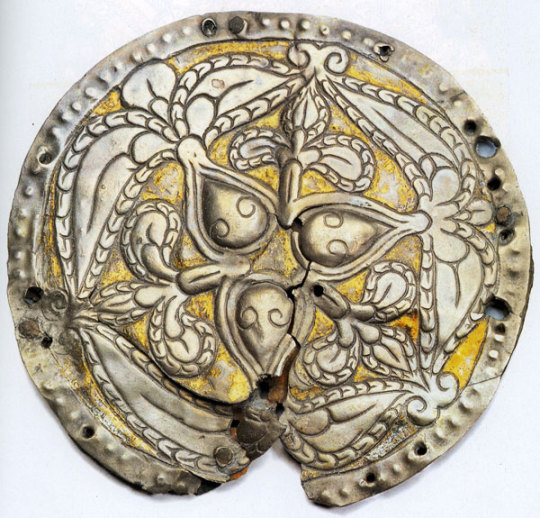

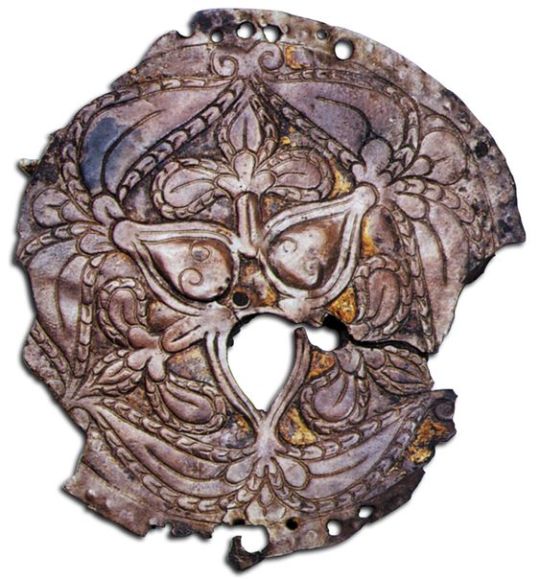


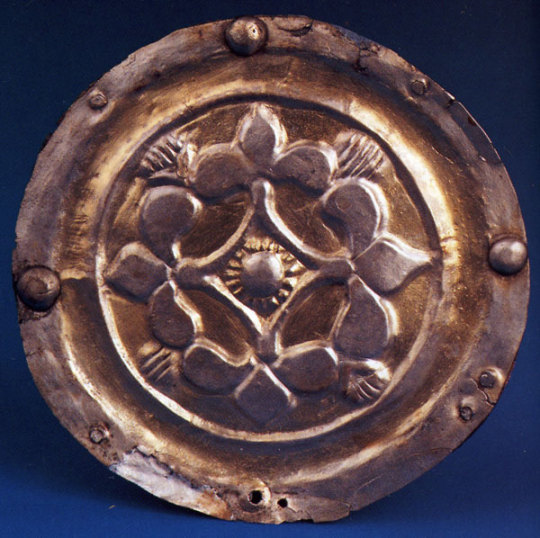

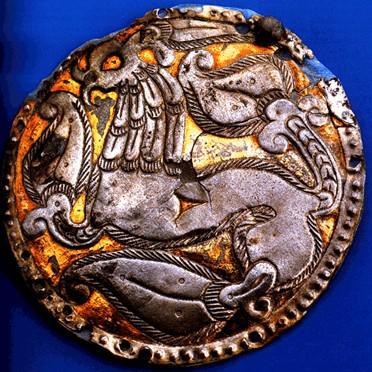
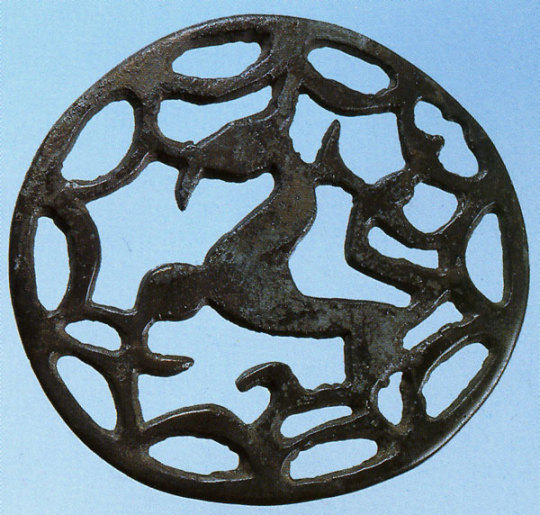

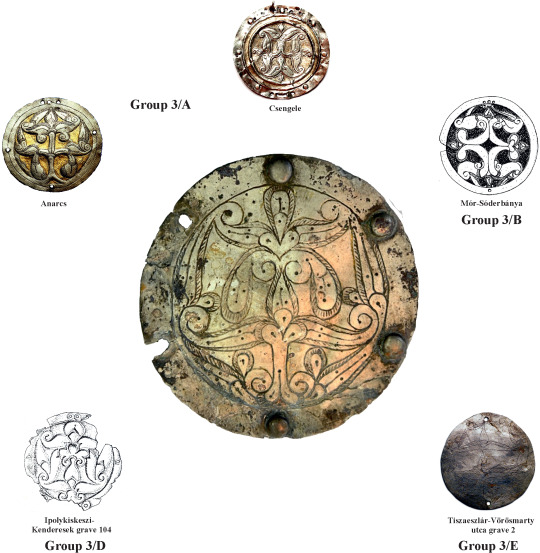
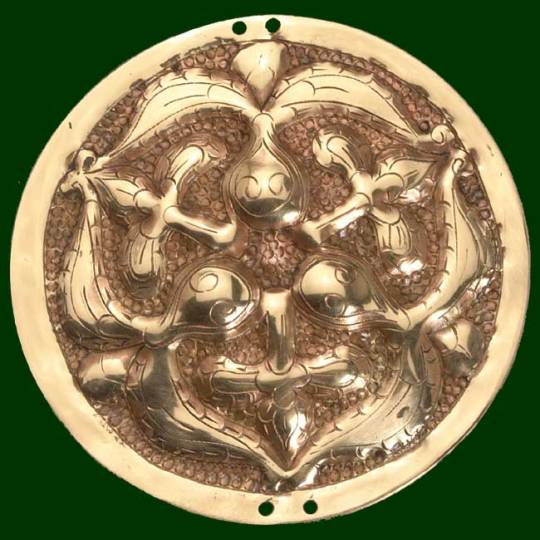
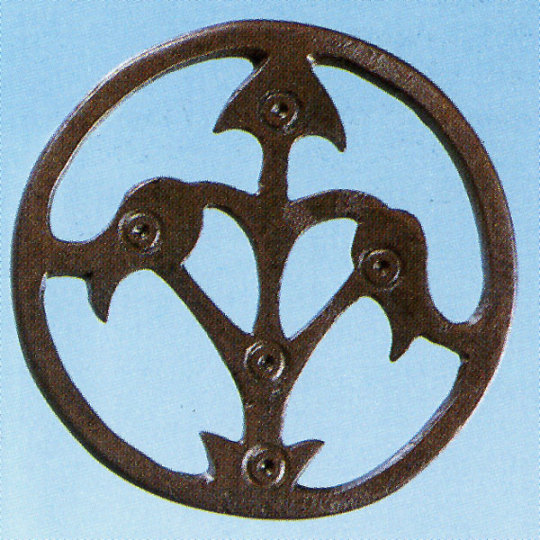
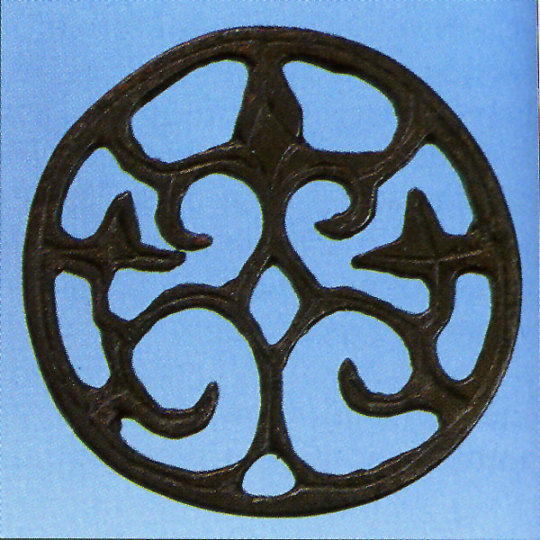

Hungarian Hair Braid/Decorative Discs from the Conquest Period 9th-10th C. CE. More images on my blog, link below.
"Disks for embellishing hair plaits were jewellery items characteristic of women’s attire. When plaiting their hair, a good number of women and girls included in the strands silk ribbons or strips of leather. These ribbons and leather strips featured mountings that were round or rhombus shaped; at the end of each ribbon or strip was a disk, usually worn at chest level. Coming to light mostly in pairs, these are likewise pieces that have been cast or else stamped out from sheet metal; some are openwork. They mostly depict plant motifs, the tree of life, or palmettes; more rarely, mythical animals feature. With the exception of those in a leader’s burial discovered in the Zemplén region, hair-plait disks have always been found as parts of women’s attire. These disks belong among the archaic elements of Hungarian attire that the Hungarians brought with them from the east."
-taken from Hungarian National Museum
#hungary#hungarian art#europe#historical jewelry#historical clothing#museums#archaeology#swastika#medieval art#middle ages#finno ugric#pagan#magyar
95 notes
·
View notes
Text
youtube
The pair of Turul discs from Rakamaz 10th C. CE. I decided to make an audio recording for this one, first time I've done one of these: My interpretation of these discs, and comparing Hungarian reverence of the vulture with Egypt and the Celts.
#hungarian art#vultures#ancient egypt#celtic#european art#archaeology#history#ancient history#ancient art#artifacts#finno ugric#magyar#pagan#Youtube
16 notes
·
View notes
Text



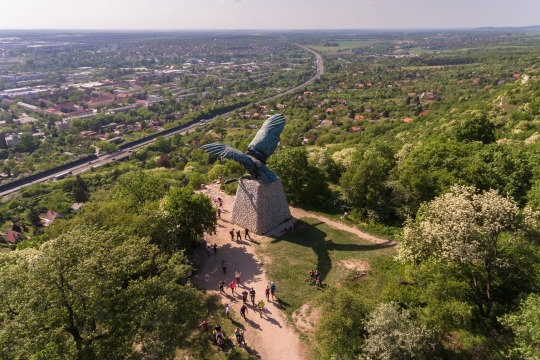

The Turul of Tatabanya by Gyula Donáth 1907
"There were 3 large Turul statues, each with a wingspan of 15 metres, in Kingdom of Hungary (before the country had its borders reconfigured by the Treaty of Trianon). The last of the three stands on a mountain near Tatabánya, Hungary, but the other two were destroyed. It is [one of] the largest bird statue in Europe, and the largest bronze statue in Central Europe. There remain at least 195 Turul statues in Hungary, as well as 48 in Romania (32 in Transylvania and 16 in Partium), 8 in Slovakia, 7 in Serbia, 5 in Ukraine, 1 in Austria and 1 in Croatia. One of the most recently erected, as of 29 September 2012, is in Hungary's Ópusztaszer National Heritage Park.
...
As part of celebrations in 1896 to commemorate the Millenium of the Hungarian conquest, sculpturer Gyula Donáth was assigned to make the Turul Statue. However, due to financial issues, it was finished much later, in 1907. Interestingly, that year was (believed to be) the millennial anniversary of the battle near Tatabánya where Magyar troops defeated Moravians in 907 (exact date uncertain). A similar statue but of smaller size (6 metres) was also made by Donáth, which was placed in the Castle of Buda, at the upper station of the funicular.
The career of the statue has not been free of complications, actually, it is a miracle that it still exists. First it was damaged by the communists in 1919 but it was restored in 1926 by sculpturer Hugó Keviczky upon the government’s direct order. Next it was the Rákosi regime that planned to remove the statue, however, it did not happen finally. As a result of neglect for decades, the statue needed to be extensively restored in 1992. At the same time, it has become the central element in the coat of arms of Tatabánya."
-taken from Wikipedia & OutdoorActive
#hungarian art#hungarian history#magyar#finno ugric#european art#history#europe#sculpture#statue#bird art#animal art#art#hungary
20 notes
·
View notes
Text
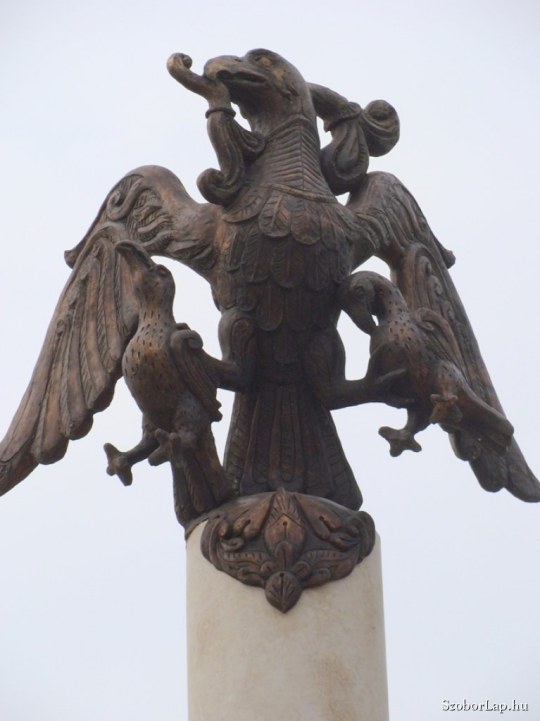
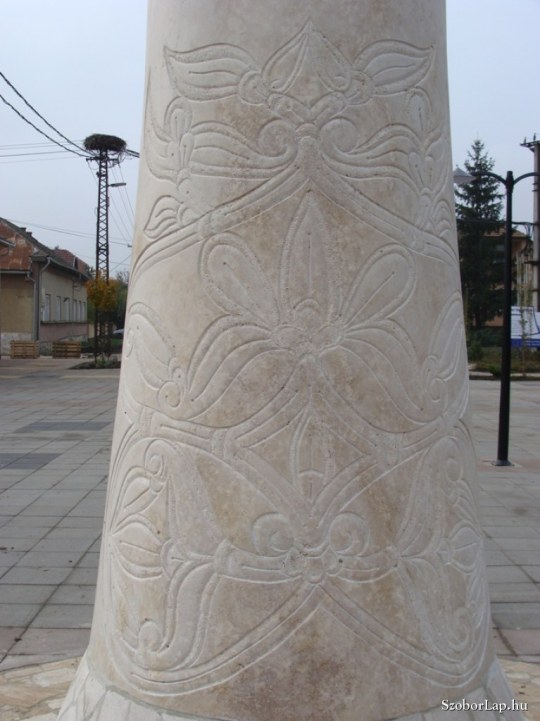


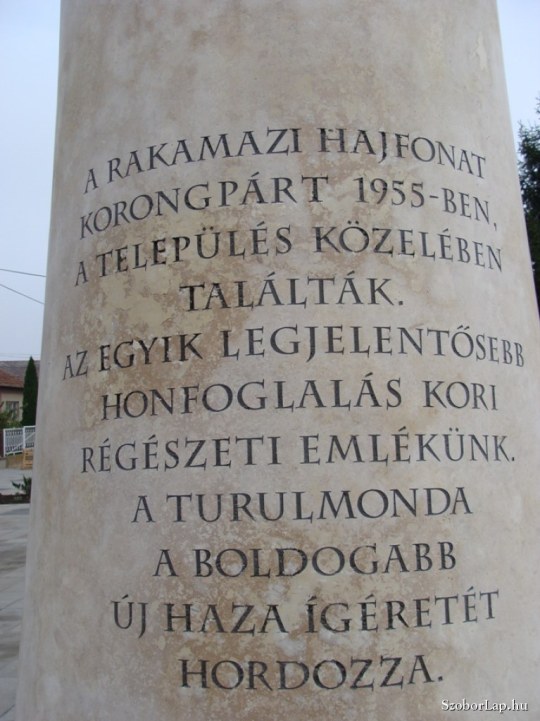
Turul statue in Rakamaz by Bíró Lajos 2009
"And among the captains, Árpád the son of Álmos, son of Előd, son of Ügyek, from the Turul clan, was richer in wealth and more powerful in war."
— Simon of Kéza: Gesta Hunnorum et Hungarorum
3 notes
·
View notes
Text
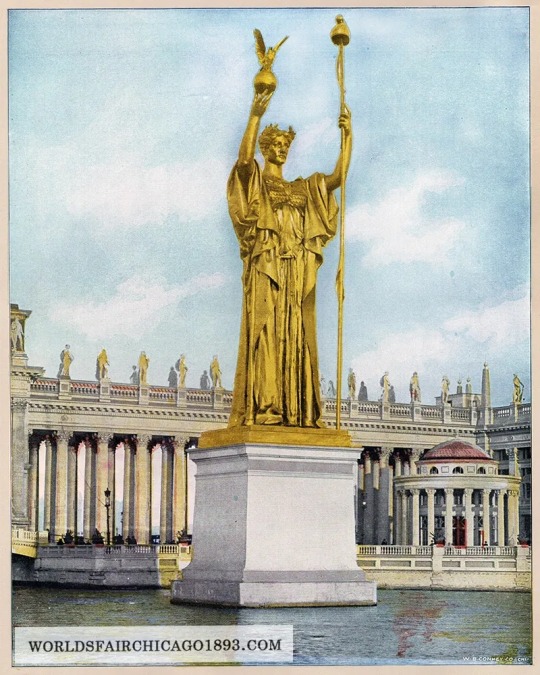
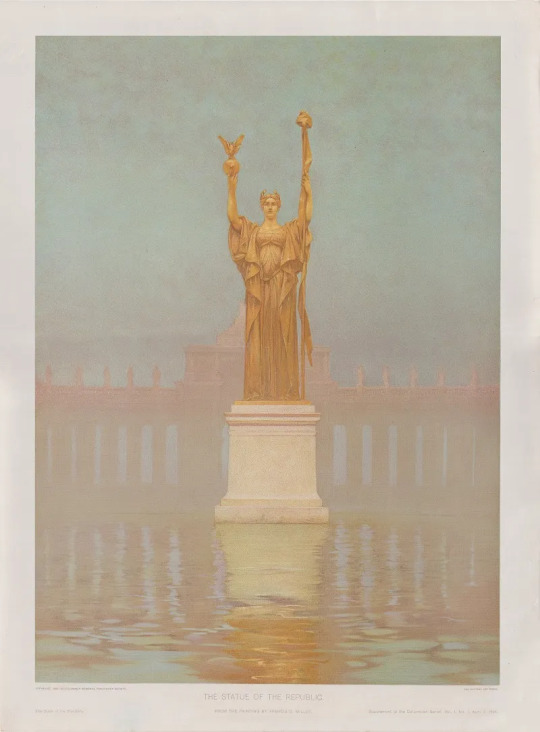
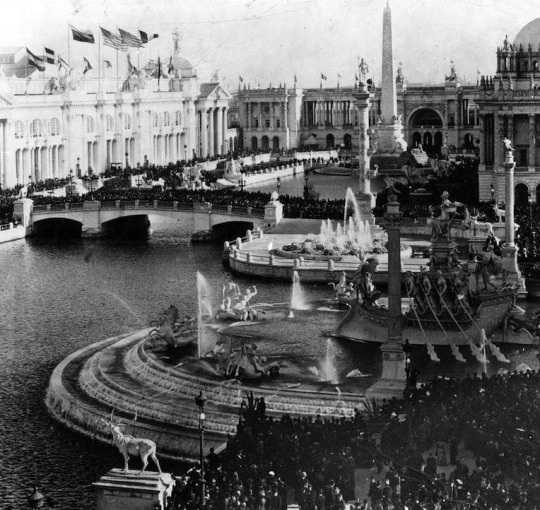
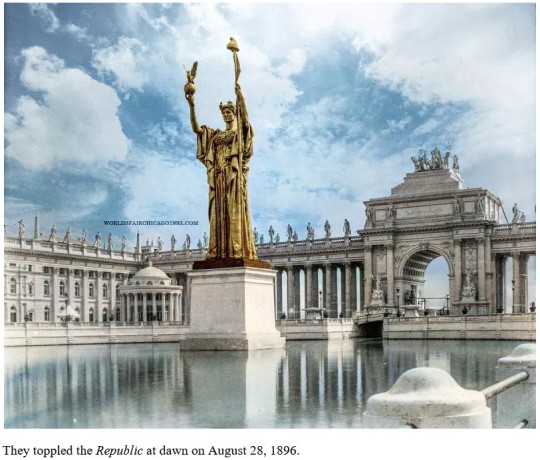
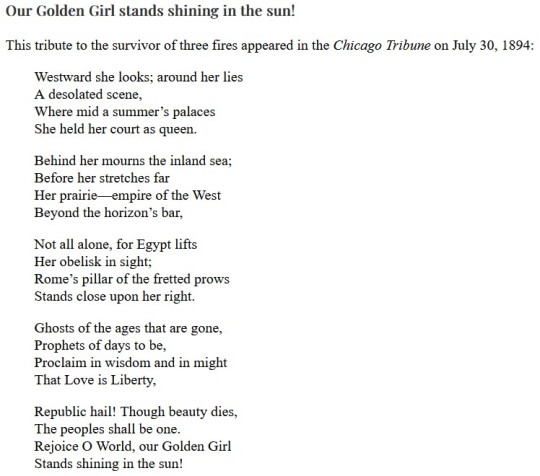



Statue of The Republic by Daniel Chester French 1893. Going to make this my '4th of July post', happy 4th all! Sources and more images on my blog, link at bottom.
The Republic statue was created for the Chicago World Fair of 1893 and was known by a variety of names: The Golden Lady, The Republic, Goddess of the Republic, and Statue of Liberty. The fair lasted from May 1st-October 30th. About 50 different countries participated in the fair and 18 erected their own buildings at the site. The site was known as the "White City" for its predominant white Greco-Roman style buildings. It also featured the first ferris wheel, created by George Washington Gale Ferris Jr. for the event.
After the fair closed the small city was destroyed in 3 fires, but the Goddess statue survived all of them:
"On January 8, 1894, the first great post-Fair fire consumed much of the east end of the Court of Honor. French’s Statue of the Republic stood “in the midst of it all like a gigantic silhouette, with uplifted arms as if appealing for help,” wrote the Chicago Tribune (Jan. 9, 1894). She held her liberty cap defiantly among clouds of black smoke as fierce flames danced around her for more than an hour. While the heat from this “Peristyle Fire” was intense enough to melt the ice on the Grand Basin, it barely tarnished the golden statue. By morning, the conflagration had completely destroyed the Peristyle, Casino, and Music Hall and damaged parts of the Manufactures and Liberal Arts Building. Had the firemen not saved it from the flames, the Republic likely would have burned down that night, too. The next morning, the majestic golden goddess of the Fair looked as brilliant as ever, “except for a blistered right arm and a black spot over her heart,” noted the Chicago Herald." (from worldsfairchicago1893 website)
"When arsonists set a fire on February 14, 1894, the Republic watched the blaze destroy much of the South Colonnade between Agricultural Hall and Machinery Hall. She faced yet another and much bigger scene of horrific destruction on July 5, 1894, as the western end of the Court of Honor burned in another arsonous fire. Seven buildings—Terminal Station, the Administration Building, Mines and Mining Building, Electrical Building, Manufactures and Liberal Arts Building, Agricultural Building, and Machinery Hall—succumbed to the inferno. The next morning, a single serene statue towered above a field of blackened ruins of twisted iron framework." (from worldsfairchicago1893)
"...the Chicago Inter Ocean also recognized that, with the surrounding buildings of the White City gone, the Republic now stood to better advantage: “Particularly was this so when last winter the golden figure towered above an unbroken field of snow. On the night of the last fire the flames seemed to separate and pass by on either side, and when the sun rose the next morning there seemed nothing left untouched but the golden woman of the lagoon.” (from worldsfairchicago1893)
“With only the sky for a background,” observed the Washington (DC) Evening Star, the statue “shows it proportions and lines to better effect now than before.” (from worldsfairchicago1893)
Redesign plans for the area to be turned into a park by Olmsted, Olmsted & Eliot initially included the statue at its current location but later omitted it from the plans. Minimal efforts were made to repair the parts of the statue that had been damaged and the city decided, in secret, to destroy it:
"While the South Park board had spent around $250,000 making improvements to Jackson Park, focused mostly on the northern end near the museum, they had devoted a mere $400 for repairing staff and repainting the Republic. This despite a claim by J. F. Foster, General Superintendent and Engineer for the South Park Commission, that “every effort had been made to preserve the statue.” On Thursday, August 27, Captain Kelly of the South Park Police placed the orders to burn the Republic the next morning, and Capt. Shippy of the Woodlawn police notified the fire companies in the district that a blaze would be set in Jackson Park at dawn. When taking this decisive action at their meeting on August 12, the South Park board chose to keep the execution a secret. They delegated the task of destroying the statue to mechanical engineer and Assistant Park Superintendent A. H. Wilder, who chose fire as his tool. The Commission deemed burning the statue at night too hazardous because it would attract too many people, and a proposal for a public ceremony and celebration also was dismissed. They thought it best to raze the Republic—in secret—at daybreak. Her executioners slipped away quietly as crowds arrived on the scene, curious about the smoke rising over the park." (from worldsfairchicago1893)
#american history#chicago#us history#statues#sculptures#history#art#sculpture#museums#4th of july#united states
15 notes
·
View notes